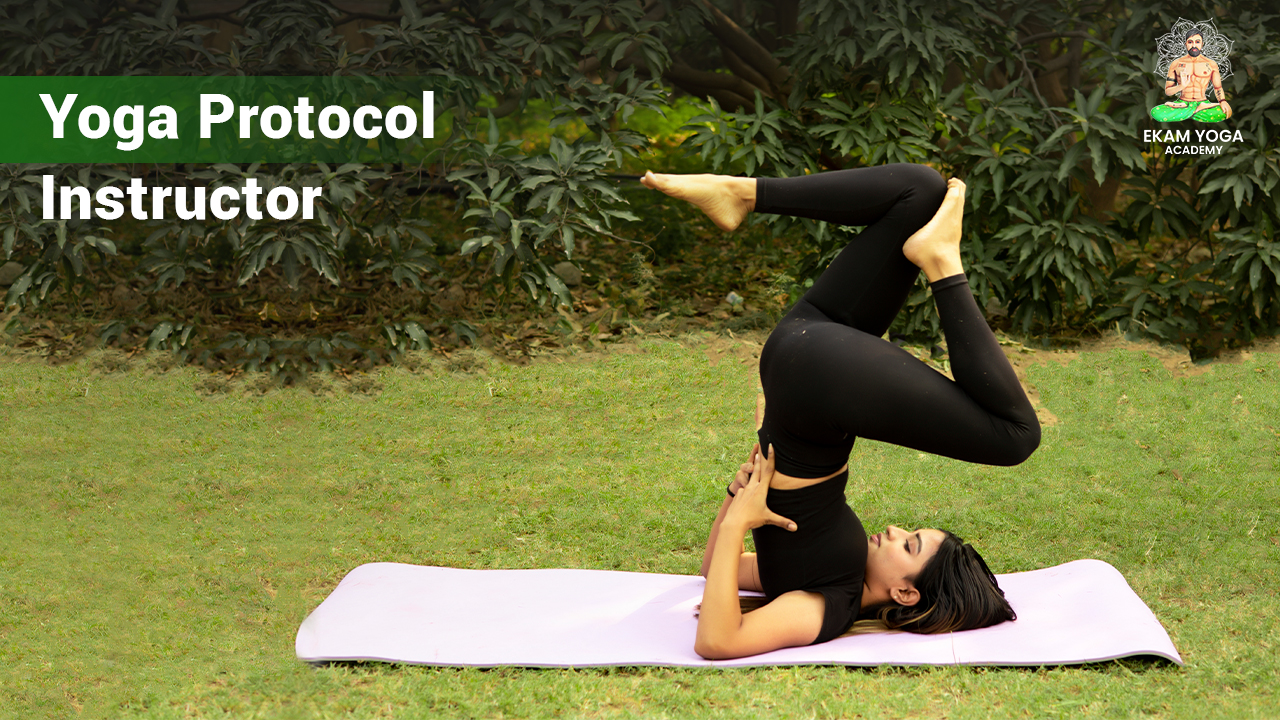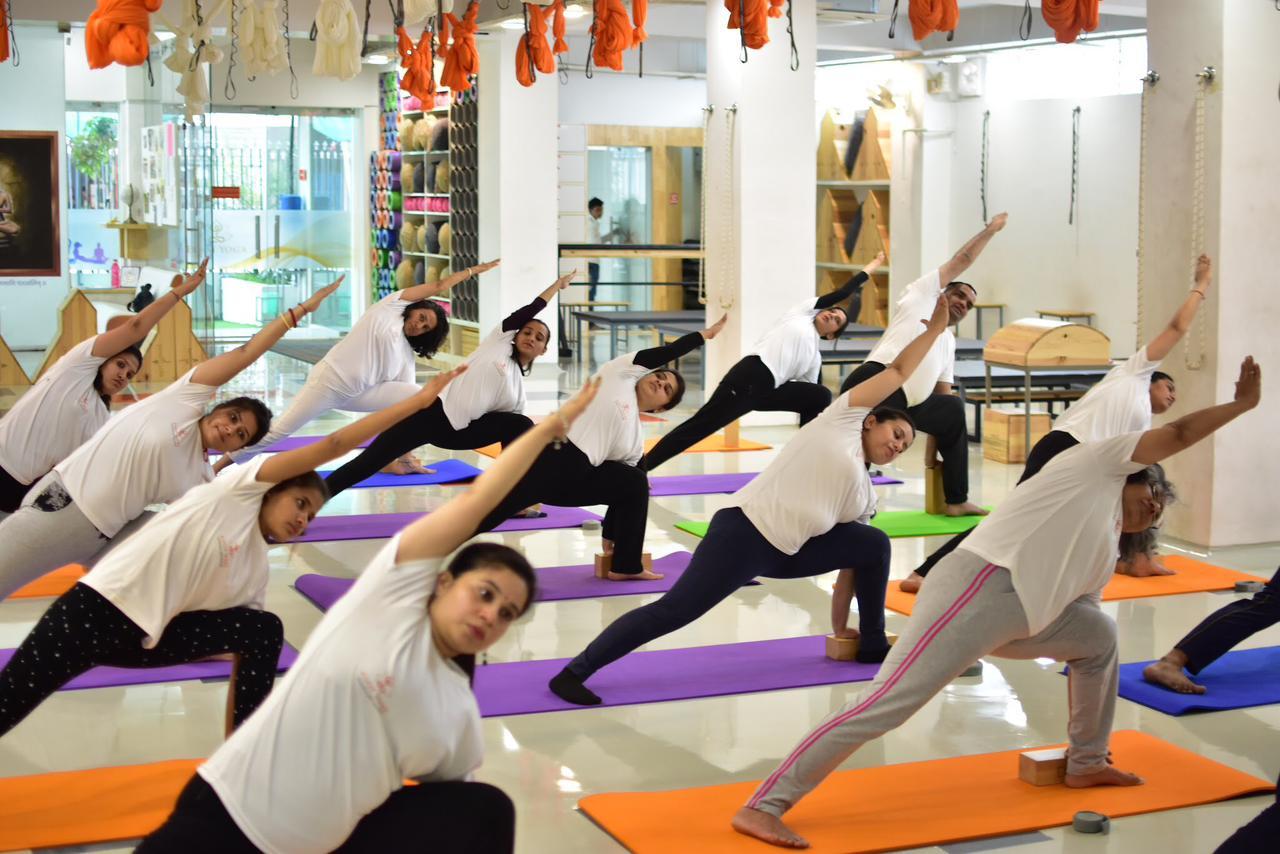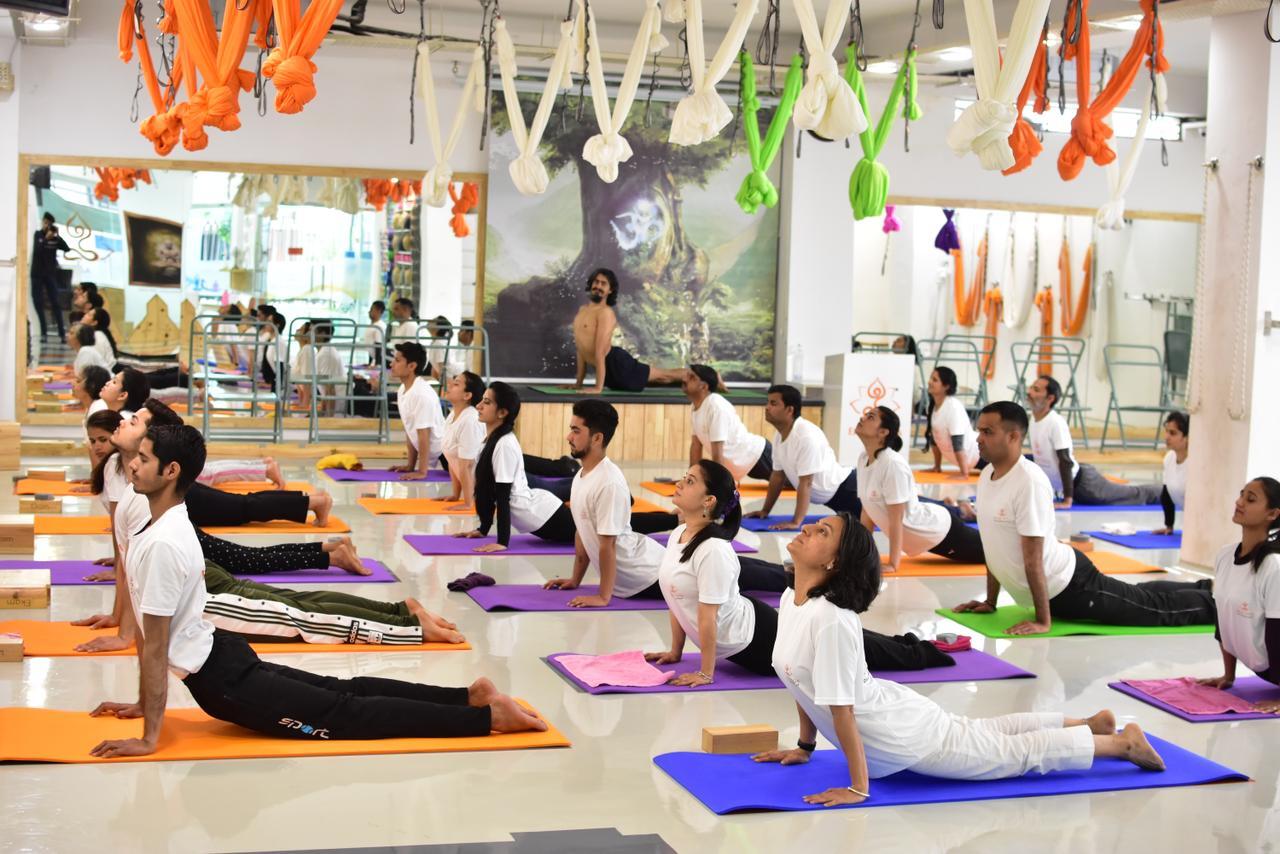In the world of wellness and holistic living, the role of a Yoga Protocol Instructor is essential. Guiding individuals towards physical and mental well-being, these instructors possess a deep understanding of yoga principles, techniques, and protocols. If you're passionate about yoga and aspire to become a Yoga Protocol Instructor, this blog post will provide you with valuable insights, requirements, and steps to embark on this rewarding journey.
Yoga Protocol Instructor Course at Ekam Yoga Academy
Table: Skills and Qualifications for a Yoga Protocol Instructor
|
Skills |
Qualifications |
|
In-depth knowledge of yoga |
Certified yoga teacher training program |
|
Familiarity with protocols |
Strong personal practice |
|
Effective communication |
Teaching experience |
|
Ability to create safe spaces |
Continued education and professional growth |
Understanding the Role:
As a Yoga Protocol Instructor, your primary goal is to facilitate a transformative experience for your students through structured yoga protocols. These protocols encompass a series of yoga asanas, pranayama (breathing exercises), meditation techniques, and relaxation methods tailored to address specific needs or conditions. The role demands not only expertise in the physical aspects of yoga but also a deep understanding of its mental, emotional, and spiritual dimensions.
Becoming a Yoga Protocol Instructor:
To embark on this fulfilling path, you need to follow these essential steps:
1. Deepen Your Knowledge: Enroll in a reputable certified yoga teacher training program that covers a comprehensive curriculum, including the fundamentals of yoga philosophy, anatomy, teaching methodology, and sequencing.
2. Cultivate Your Personal Practice: Develop a consistent personal yoga practice to refine your understanding of asanas, pranayama, and meditation. Your own practice serves as the foundation upon which you can build as a capable and inspiring instructor.
3. Gain Teaching Experience: Start sharing your knowledge and passion by teaching yoga classes. Whether it's volunteering at community centers, offering private sessions, or assisting experienced instructors, teaching experience enhances your communication skills and allows you to understand the dynamics of a yoga class.
4. Pursue Continued Education: To stay up-to-date with evolving practices and protocols, invest in continuous education. Attend workshops, seminars, and specialized training programs that expand your repertoire and expertise in areas such as restorative yoga, therapeutic applications, or mindfulness techniques.

End of Line
Embarking on the path to becoming a Yoga Protocol Instructor is a profound and rewarding journey. By honing your knowledge, nurturing your personal practice, gaining teaching experience, and investing in continued education, you can inspire and guide others toward the transformative power of yoga. Remember, a Yoga Protocol Instructor is not just a title but a commitment to lifelong learning, growth, and sharing the gift of yoga with the world.
FAQs
Q1. How long does it take to become a Yoga Protocol Instructor?
Ans. The duration varies, but typically it takes a minimum of 200 hours of certified yoga teacher training, followed by practical experience and continued education.
Q2. Can anyone become a Yoga Protocol Instructor?
Ans. Yes, anyone with a genuine passion for yoga, a commitment to personal growth, and a desire to help others can embark on the path to becoming a Yoga Protocol Instructor.
Q3. Are there any prerequisites for a yoga teacher training program?
Ans. Most programs require a basic understanding of yoga asanas and a certain level of fitness. However, passion and dedication are more important than pre-existing expertise.
Q4. What are the career prospects for Yoga Protocol Instructors?
Ans. Yoga Protocol Instructors can find opportunities in yoga studios, fitness centers, retreats, corporate wellness programs, or as independent instructors offering private sessions.
Q5. How can I specialize in specific yoga protocols?
Ans. By pursuing advanced training programs and workshops focused on specific protocols, you can gain expertise in areas such as prenatal yoga, therapeutic yoga, or yoga for stress management.
Q6. Is it necessary to continue personal practice as a Yoga Protocol Instructor?
Ans. Yes, maintaining a personal yoga practice is crucial for instructors. It helps you deepen your understanding, refine your skills, and embody the principles you teach.
Q7. What are the benefits of practicing yoga protocols?
Ans. Yoga protocols offer numerous benefits, including increased flexibility, improved strength, reduced stress, enhanced mental clarity, better sleep, and overall harmony between mind, body, and spirit.
Q8. How can I ensure the safety of my students during yoga sessions?
Ans. As a Yoga Protocol Instructor, prioritize student safety by providing clear instructions, modifications for different abilities, and creating a safe and supportive environment for practice.
Q9. How can I continue my professional growth as a Yoga Protocol Instructor?
Ans. Continual learning is key. Explore advanced training programs, attend workshops, connect with fellow instructors, and embrace new research and developments in the field of yoga.





0 Comments
Write a comment